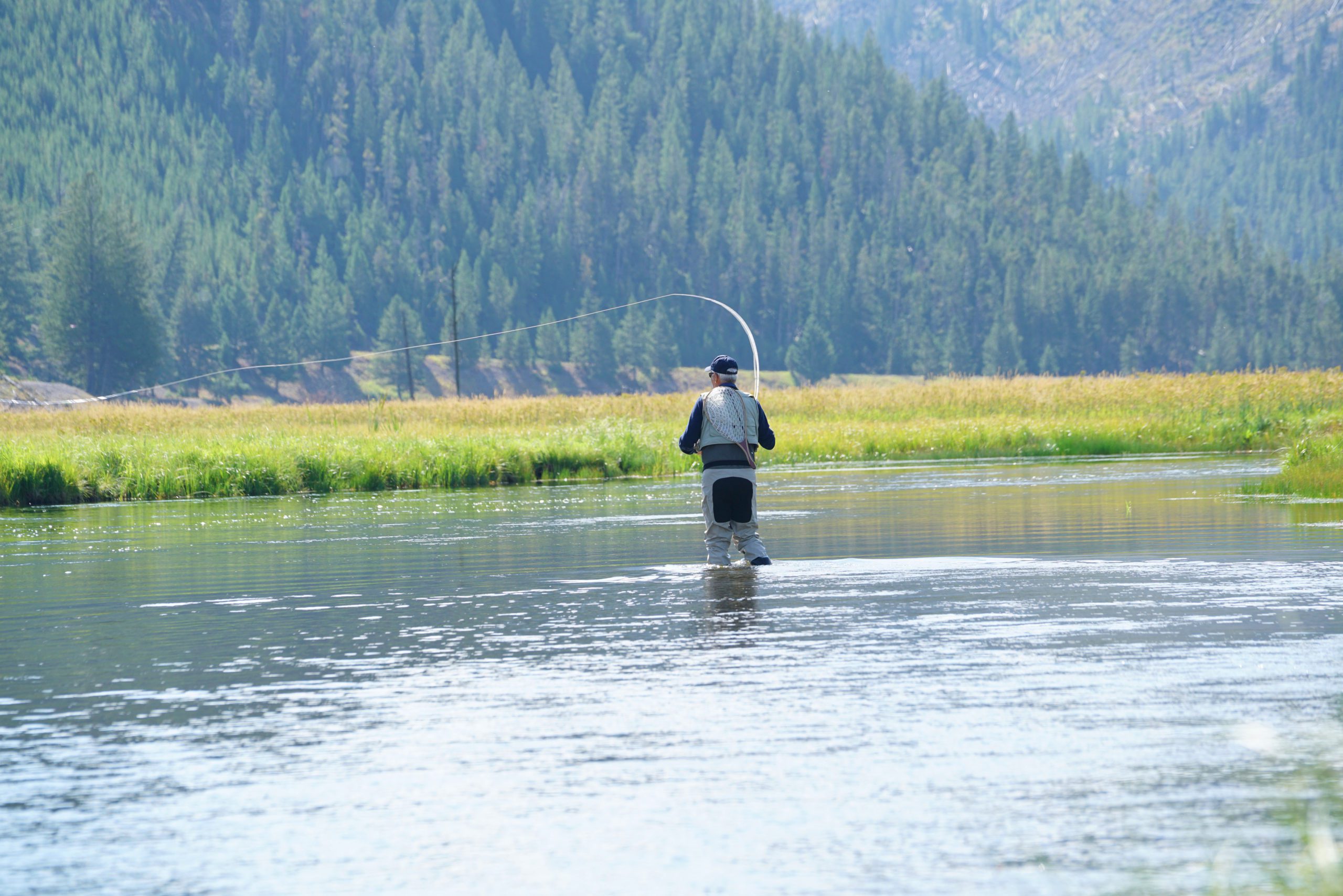
By Todd Wilkinson EBS Environmental Columnist
For those unfamiliar with Greater Yellowstone—the elements that set this ecoregion apart in America—let’s start with a refresher. At 22.5 million acres, Greater Yellowstone is one of the last, still-essentially-intact and interconnected masses of wildlands left in the world.
Because it is located in the backyard of a wealthy developed nation with more than 320 million people, this alone makes its status something of a 21st century miracle.
Owed to its geographical remoteness and the work of generations of conservationists, the region today boasts all of its original native mammal, avian, reptilian, amphibian, and fish species that were here 10,000 years ago. That includes grizzly bears and gray wolves, bald eagles, peregrine falcons, trumpeter swans, bison, and black-footed ferrets, every single one of these rescued by intervention or due to shielding by the federal Endangered Species Act.
Greater Yellowstone still has epic migrations of elk, deer and pronghorn, eliciting comparisons to the Serengeti Plain of eastern Africa. Yellowstone, the mother of all national parks and the preserve situated at Greater Yellowstone’s core, still has 10,000 living, breathing geothermal phenomena, more than can be found in the rest of the globe combined.
The ecosystem is a watershed birthplace of three major river systems—the Snake-Columbia, Green River-Colorado, and Missouri-Mississippi, which means that the water gathering here shapes human lives, communities and economies hundreds if not thousands of miles distant.
As for the things that fuel Greater Yellowstone’s commerce, no longer is it logging, mining or ranching. The region’s two crown-jewel national parks, Yellowstone and its Jackson Hole neighbor, Grand Teton, are responsible for generating $1 billion in annual commerce based on nature tourism. Ecosystem-wide, Ray Rasker of Bozeman-based Headwaters Economics says, non-consumptive natural resource amenities account for at least another $3 billion in direct and indirect economic activity.
In terms of Greater Yellowstone’s value in shaping the lifestyles of her 600,000 human residents scattered across 20 counties—and in attracting six million visitors every year—just one word characterizes the assessment: priceless.
Greater Yellowstone possesses something else: one of the highest per-capita concentrations of professional conservationists on Earth. Yet only one, the Northern Rockies Conservation Cooperative, inhabits a niche unlike any other.
Thirty years ago, around the time I began writing about Greater Yellowstone, NRCC was just getting off the ground. Dr. Susan Clark, an ecologist by training, had been researching the sudden discovery of a wild remnant population of black-footed ferrets near Meeteetse, Wyoming. The species had been long thought to be extinct.
She had already, however, distinguished herself as an out-of-the-box thinker. In the late 1970s, for example, she and co-author Robert Dorn, produced the first-ever comprehensive compendium for rare and endangered vascular plants and vertebrates in Wyoming.
“You can’t protect what you don’t know is there, but you can easily lose it and never know it’s gone if you don’t pay attention,” she told me recently. “Unfortunately, there are lots of things that are interrelated; you lose one and you can lose others; it may happen at the soil level or it might be apparent in a trophic cascade when you, say, eliminate an important system driver like the wolf.”
As Clark, who still spends part of her year teaching at Yale University, remembers, there was no truly unified thinking being applied to wildlife and other issues in Greater Yellowstone.
The prevailing paradigm was one of approaching conflict piecemeal, agency by agency, silo by silo; seldom was planning applied across the artificial human boundaries of the National Park Service, U.S. Forest Service, Bureau of Land Management, and Fish and Wildlife Service that oversees, in total, a land mass larger than New England.
In the beginning and subsequently over the years, NRCC has brought hundreds of scientists with international experience together to apply their knowledge.
Clark, who was among the early voices giving rise to creation of the Greater Yellowstone Coalition, played an instrumental role in Greater Yellowstone being treated as an ecosystem and pushing to establish a baseline for assessing the health of individual species. But she realized that science alone does not ensure better management. Without quality data, problems go undetected. The work of NRCC (nrccooperative.org) matters as Congress moves to cut budgets of federal agencies. It’s a great group to support with your donation.
“Everyone, because of what hats they wear and how they identify culturally, socially, ideologically, and even spiritually, has different ways of making meaning of Greater Yellowstone,” Clark says.
“NRCC is operating at the leading edge in terms of pushing the discourse to a place, sometimes out of people’s comfort zones, where creative solutions can emerge. Knowing we can get there is, for me, not only a statement of faith that we can still save the best of Greater Yellowstone but I have a pragmatic hope that we can rise together to meet the challenge.”
Todd Wilkinson has been a journalist for 30 years. He is author of the recent award-winning book “Grizzlies of Pilgrim Creek: An Intimate Portrait of 399, the Most Famous Bear of Greater Yellowstone,” featuring 150 astounding images by renowned American nature photographer Thomas Mangelsen. His article, “2067: The Clock Struck Thirteen,” appears in the winter 2017 edition of Mountain Outlaw magazine, on shelves now. EBS publishes Wilkinson’s New West column every week online and twice a month in the printer version of the paper, under a partnership arrangement with the Wyoming online journal thebullseye.media. We encourage you to check out The Bullseye.













